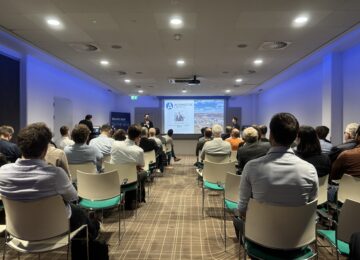PGS 37-1 Safety Framework for Lithium-Ion Storage Systems published
Publication safety framework for lithium-ion-containing energy carriers - PGS37-1
The PGS-37 committee (Publication of Hazardous Substances), in which ESNL participated, has developed a safety framework for energy carriers containing lithium ion. To ensure that the safety framework meets the needs of the storage industry, ESNL and its members established a Safety Working Group. This working group has advised the PGS-37 committee over the past period.
Publication of the PGS-37-1 guideline
Purpose and scope of PGS-37
The purpose of this framework is to establish a safety standard for both existing and new battery systems with capacities greater than 20 kWh. The published measures apply to systems with a maximum capacity of 400 MWh. For larger systems, customization is required, requiring a risk analysis. The safety framework distinguishes between energy storage systems based on enclosure (Typical 1 - 3) and based on placement (Typical 4 - 6). Most measures only apply to certain types of systems.
Webinar Safety
ESNL hosted a webinar organized to inform its members in advance of the implications of the new safety frameworks. This focused on the key points of Typical 3 (EOS/BESS park with outdoor non-accessible enclosures) and Typical 4 (Mobile EOS/BESS). The webinar explained the implementation timelines of various measures, ranging from 3 months to 10 years, depending on the urgency of improving safety and/or achieving significant safety benefits. In particular, the implementation of fire water connections has a relatively short timeframe of 2 years.
For Typical 3, an EOS/BESS park with outdoor non-accessible enclosures, safety precautions are taken to ensure minimum distance between EOSs, between EOS clusters and environment.
Typical 4 includes mobile energy storage systems housed in modified containers or temporarily set up outdoors or indoors during the construction phase, in well-ventilated locations. One measure highlighted during the webinar is the temporary alternative measure for mobile EOS/BESS systems without a fire water connection (1000L/min), which is the use of a water cutting system as a "last line of defense" until the transition period for the fire water connection (M56) takes effect. This applies only to systems that entered the market before the final version of PGS37-1 was adopted.
Publication and follow-up
You can download the publication of the PGS37-1 standard. here find. For other questions, we would first like to refer you to the Q&A session of the webinar (available to ESNL members only). Energy Storage NL plans to organize another session next year to survey members on how the implementation of the directive is going and what problems the industry is encountering in order to then bring these to the PGS committee.





